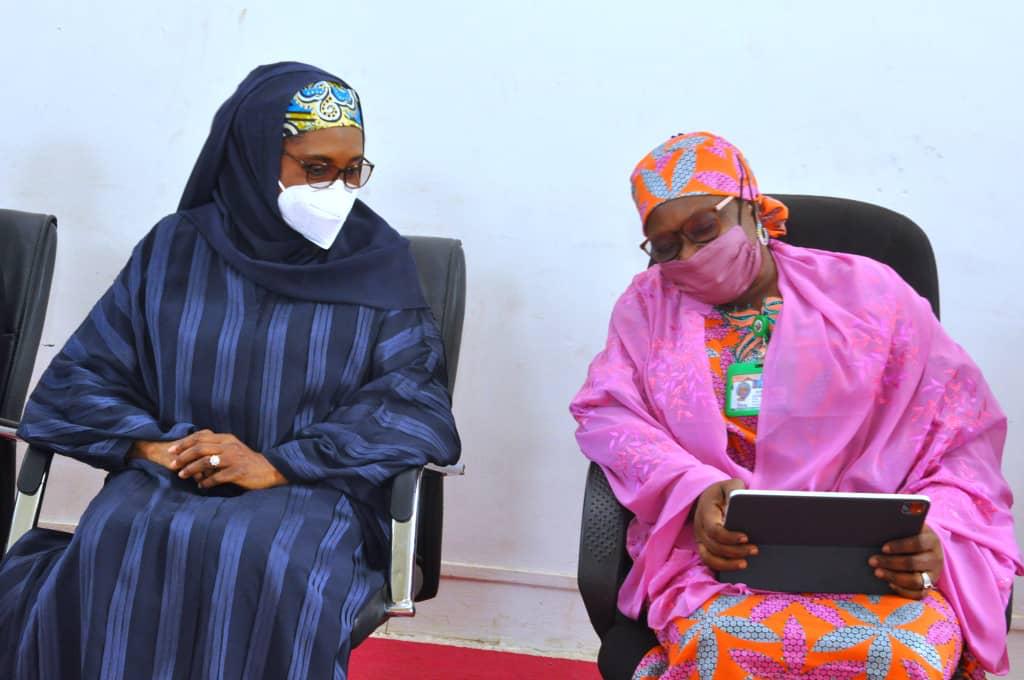In spite of several challenges caused by low oil prices and the second wave of the Covid-19 pandemic, Nigeria’s economy is finally out of the woods and has exited recession as Gross Domestic Product (GDP) rose by 0.51 percent in the first quarter of 2021.
This is contained in a report by the National Bureau of Statistics (NBS) on Sunday in its GDP report for the first quarter 2021.
The NBS said, “The Q1 2021 growth rate was slower than the 1.87 percent growth rate recorded in Q1 2020 but higher than 0.11 per cent recorded in Q4 2020.”
Considering the GDP projection for the Nigerian Economy, recall that Mrs. Zainab Ahmed, Honourable Minister of Finance, Budget and National Planning, had said: “By 2021, the economy will recover from recession, and it is the sustained implementation of good fiscal policies, the monetary policies and the economic sustainability plan by President Muhammadu Buhari that led to the country’s exit from the recession.
She also said that the quick exit showed that government’s economic diversification efforts were yielding positive outcomes. According to her, some activities in the country have shown resilience, recording strong positive growth.
Reacting to the development, foremost economic expert, Professor Uche Uwaleke, said the Q1 2021 GDP report reflects an economy already on the path of gradual economic recovery with a positive real GDP growth rate following that recorded in the previous quarter.
He said in a statement on Sunday that although still weak at 0.51percent, it is interesting to note that the manufacturing sector is now out of the negative territory increasing from -1.51 percent to 3.40 percent.
According to him what was “equally noteworthy is the moderation in the negative performance in sectors like trade, accommodation and education.”
“The increase recorded in the health sector from 3.05 percent in Q4 of 2020 to 4.65 percent clearly shows that the country is winning the war against the COVID’19 pandemic.
“It is clear that the improved performance in the oil sector relative to the previous quarter was largely on account of improvement in average crude oil production.
“But the report also reveals disturbing pattern in the real GDP growth rate. Declines were recorded in critical sectors of the economy such as agriculture, ICT, real estate and transportation. This may not be unconnected with the rising insecurity in the country.
“That the non-oil sector dropped should be of concern to both the fiscal and monetary authorities,” Uwaleke added.
“Nigeria’s GDP grew by 0.51 percent (year-on-year) in real terms in the first quarter of 2021, marking two consecutive quarters of growth following the negative growth rates recorded in the second and third quarters of 2020,” the report reads.
“The Q1 2021 growth rate was slower than the 1.87 percent growth rate recorded in Q1 2020 but higher than 0.11 recorded in Q4 2020, indicative of a slow but continuous recovery.
“Nevertheless, quarter on quarter, real GDP grew at -13.93 percent in Q1 2021 compared to Q4 2020, reflecting a generally slower pace of economic activities at the start of the year.
“In the quarter under review, aggregate GDP stood at N40,014,482.74 million in nominal terms. This performance is higher when compared to the first quarter of 2020 which recorded aggregate GDP of N35,647,406.08 million, indicating a year-on-year nominal growth rate of 12.25 percent.
“The nominal GDP growth rate in Q1 2021 was higher relative to 12.01 percent growth recorded in the first quarter of 2020, as well as the 10.07 percent growth recorded in the preceding quarter.”
According to the report, the oil sector recorded real GDP growth rate of –2.21 percent (year-on-year) in Q1 2021, indicating a decrease of -7.27 percentage points relative to the growth rate recorded in the corresponding quarter of 2020.
It is also higher when compared to Q4 2020 which recorded –19.76 percent growth rate — growth in Q1 2021 was higher by 17.55 percentage points.
Daily oil production stood at 1.72 million barrels per day (mbpd), or 0.35mbpd lower than the average daily production of 2.07mbpd recorded in the same quarter of 2020.
However, the figure was higher than the production volume of 1.56mbpd recorded in the fourth quarter of 2020.
Meanwhile, performance in the non-oil sector declined when compared to previous figures.
“The non-oil sector grew by 0.79 percent in real terms in Q1 2021, which was -0.75 percent points lower compared to the rate recorded in the same quarter of 2020, and -0.89 percent points lower than rates recorded in the fourth quarter of 2020,” it reads.
“Growth in the non-oil sector was driven mainly by the information and communication (telecommunication) sector, while other drivers include agriculture (crop production); manufacturing (food, beverage and tobacco); real estate; construction and human health and social services.”





